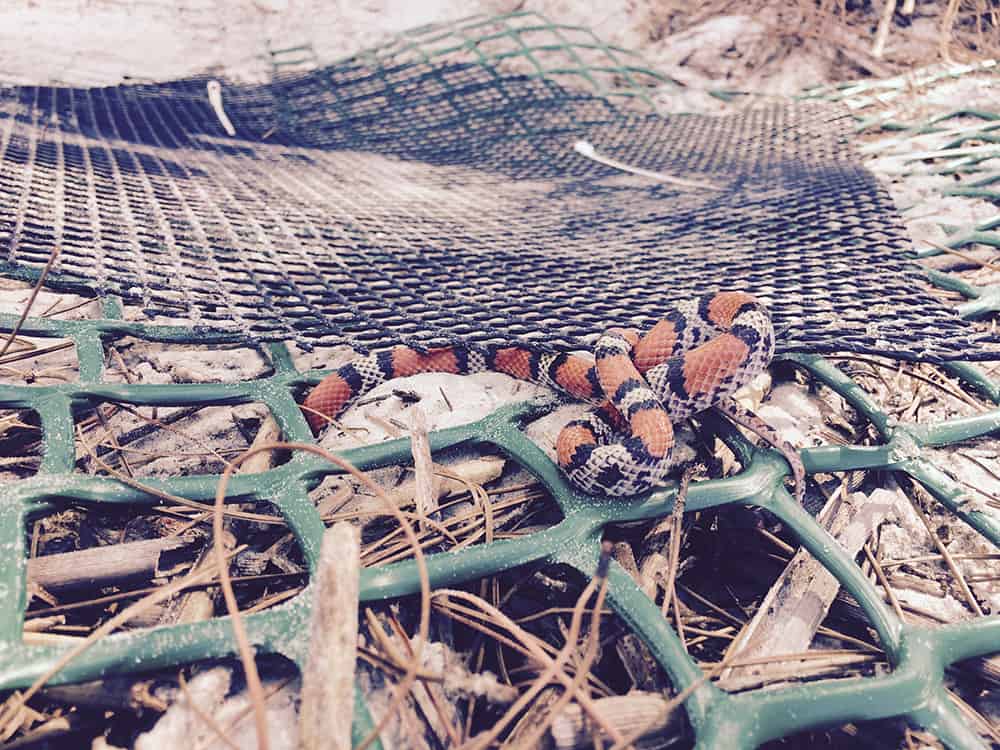Share this article
Recovering Georgia loggerheads face feral hog predation
Loggerhead sea turtle nests on Georgia’s Barrier Islands are experiencing improved survival rates, but invasive swine are the major predators affecting them.
Listed as threatened under the Endangered Species Act, loggerheads (Caretta caretta) nest on all of Georgia’s Barrier Islands from April to September. Their populations plummeted from the mid-1960s to the 1990s due to a combination of getting caught in fishing gear, the loss or degradation of nesting habitats, vessel strikes and problems related to plastic pollution in the ocean. But their populations in Georgia have rebounded since the 1990s, due in part to strategies like nest relocation, the use of protective screens around nests and predator removal.
“The outlook is very encouraging. A lot of the highly developed islands are having almost no depredation occur,” said Zachary Butler, an invasive reptile and amphibian biologist at the University of Florida, though he added that the developed islands also have lowest nesting totals and fewer nests to protect.
Butler and his colleagues realized that nobody had actually conducted a study tracking the major predators of loggerhead nests in the state. They decided to take a closer look at data that had been gathered for years by volunteers, conservationists and wildlife managers who work with the turtles.
“I was really interested in seeing what were the dominant predators that were causing the most egg loss,” said Butler, who was a master’s student at the University of Georgia at the time of the study published recently in Global Ecology and Conservation.

Volunteers are responsible for much of the work tracking the predations as well as protecting turtles on the barrier islands. Credit: Breanna Ondich
The team collected data from all 12 of the barrier islands and analyzed all recorded instances of nest predation from 2009 to 2018. They found that Georgia had done a good job of reducing overall predation to less than 10% of loggerhead eggs.
“The increase in nesting trends are representative of conservation efforts like turtle excluder devices but also the work in terms of protecting the nests,” Butler said. The devices are attached to fishing nets and allow the reptiles to escape.
But they found that feral hogs (Sus scrofa) were the turtles’ biggest predator, responsible for some 44% of the nest predations. Raccoons (Procyon lotor) were the second most common predators, at 35%, while a host of others, from coyotes (Canis latrans) to ghost crabs (Ocypode spp.) also preyed on turtle eggs.
The researchers also found some previously unknown ecological relationships, like a scarlet snakes possibly (Cemophora coccinea) foraging for loggerhead eggs — a discovery they published elsewhere.
Butler said that many of these predations, such as the case of the coyote, can be attributed to individual animals developing a taste for turtle eggs. But while some predators were a huge problem on some of the islands, they were absent from others.

Scientists discovered previously unknown relationships in the course of their research, including a scarlet snake possibly predating sea turtle eggs. Credit: Breanna Ondich
The team said the results show that the removal of predators should be evaluated on a case by case basis, but eradicating feral swine from the area is critical.
“The removal of other predators should target species and locations of concern and should be conducted with consideration for the potential interactions between predators resulting in indirect effects on sea turtle egg predation and other aspects of beach ecosystem function,” they wrote in the study.
But they also touted the overall success of turtle nest management, given the rebound of populations in Georgia.
“While egg predation is still a significant reason for egg loss across several beaches, sea turtle nest protection and management can be seen as a global sea turtle conservation success, as these efforts are thought to have contributed to the recent growth in nesting trends at many nesting sites,” the authors wrote.
Header Image:
A female loggerhead sea turtle nests on Jekyll Island, one of Georgia’s Barrier Islands, in May 2019.
Credit: Breanna Ondich








